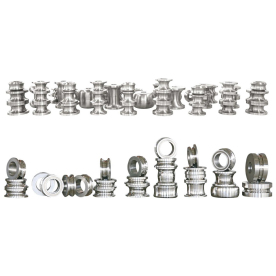[Energy-saving induction heating equipment]Exploring the Benefits and Applications of Energy-Saving Induction Heating Equipment for Modern Industries
News 2024-9-10
****
Exploring the Benefits and Applications of Energy-Saving Induction Heating Equipment for Modern Industries

Exploring the Benefits and Applications of Energy-Saving Induction Heating Equipment for Modern Industries
**Benefits of Energy-Saving Induction Heating Equipment:**

Exploring the Benefits and Applications of Energy-Saving Induction Heating Equipment for Modern Industries
2. **Fast and Precise Heating**: Induction heating allows for very fast heating cycles, which can significantly improve productivity. The ability to heat metals in seconds, rather than minutes, saves substantial time during processes such as forging, hardening, and melting. Moreover, the precision of induction heating ensures that only the targeted area of an object is heated, reducing the risk of overheating and material damage.
3. **Reduced Wear and Tear**: Energy-saving induction heating equipment generates less thermal stress on components, which leads to a lower likelihood of wear and tear. This results in longer equipment lifespan and reduces maintenance costs, enhancing productivity further.
4. **Safety**: Traditional heating methods often come with various safety risks, including burns and potential fire hazards. Induction heating minimizes these risks, as the heat is generated directly within the material itself, and the heating source remains relatively cool, reducing the chances of accidents in the workplace.
5. **Environmental Benefits**: The adoption of energy-saving induction heating equipment is a step toward sustainable industrial practices. By using less energy and producing fewer emissions, industries can align with global efforts to reduce environmental impact and combat climate change.
**Applications of Induction Heating Equipment:**
Energy-saving induction heating equipment is not limited to metal processing; its versatility allows for widespread adoption in various industries. Here are some typical applications:
- **Metal Hardening and Annealing**: Many metals undergo processes like hardening and annealing to enhance their properties. Induction heating allows for precise temperature control, ensuring that metals achieve the desired hardness without compromising their structural integrity.
- **Forging and Casting**: In forging processes, metal is heated and shaped into tools and components. Induction heating can significantly shorten heating times, resulting in faster production cycles and optimized workflow in manufacturing facilities.
- **Joining Processes**: Induction heating is frequently used in welding and brazing applications, where two metal surfaces must be joined together. The focused heat produced by induction minimizes the heat-affected zone, ensuring a strong bond while preserving the properties of the surrounding metal.
- **Food Processing**: Surprisingly, induction heating also finds its place in the culinary world. Induction cookers provide precise temperature control and faster cooking times, making them invaluable in commercial kitchens and food processing plants.
- **Automotive Industry**: In the automotive sector, induction heating is used in various applications, from hardening gears to welding components. The efficiency and speed it offers enable manufacturers to meet the high demands of modern vehicle production.
**Conclusion:**
Energy-saving induction heating equipment represents a significant advancement in heating technology that offers unparalleled benefits across multiple industries. Its energy efficiency, fast heating capabilities, and environmentally friendly attributes position it as a viable alternative to traditional heating methods. As industries continue to innovate and adopt greener practices, the use of induction heating equipment will likely increase, solidifying its role in the future of manufacturing and processing. With ongoing research and development in this area, the potential applications of energy-saving induction heating are limited only by imagination.
